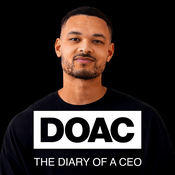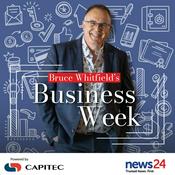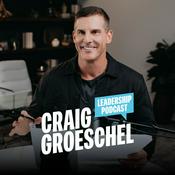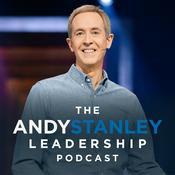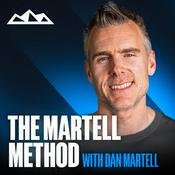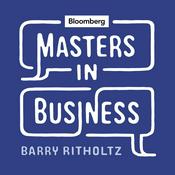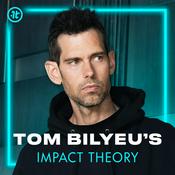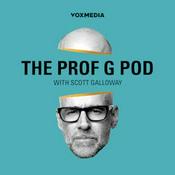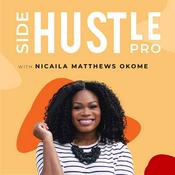25 episodes

Ag Innovation Begins on the Farm
2025/12/30 | 27 mins.
On today’s episode, we celebrate the end of our first full year of the podcast by taking a look back at some previous episodes in order to take a look forward into the future of agriscience. In the spirit of Agriscience Explained and the fact that we believe true ag innovation has to be farmer-led, we’ve invited an innovative farmer to join the show for this episode. Tim Nuss of Nuss Farms operates in Lodi, California. In addition to his day job on the farm, Tim also started a podcast called The Modern Acre with his brother Tyler about eight years ago. This weekly show that focuses on entrepreneurs in the ag industry also led them to launching something called AgList about a year ago. Tim is a great example of a farmer thinking differently about agricultural innovation. Our conversation connected very closely with several of our episodes we’ve done for this podcast this season.“ A lot of farmers are in really challenging situations right now and they're exhausted with financials of the business and just getting through the year of really keeping yourself open to new ideas and having those conversations takes a lot of work and takes a mindset…You just have to keep that positive growth mindset and know that if you have a limited budget, like don't put innovation on the back burner. It still needs to be a part of the budget.” - Tim NussAgriscience Explained hopes to not only emphasize innovation but to highlight that innovation doesn’t matter unless it can be applied. And in order to go from science to solution, effective communication has to happen. As any good entrepreneur does, beyond farming and beyond podcasting, Tim noticed an additional problem that needed a solution. Seeing this chaotic landscape of the ag biologicals market, Tim and his brother Tyler decided to launch a website called AgList. AgList helps farmers and agronomists filter through various biological products and find out what real users have to say about them. Companies pay to list their products on the platform so that they can be endorsed by customers who have firsthand experience with them. “ It's very hard for individual farmers to talk to a hundred different companies to see if their product works…. We just saw this as an opportunity where there's a lot of challenge to understand as a farmer what works for you. The landscape map is cool to look at, but it's really challenging….So kind of leveling the playing field, putting it on an independent platform to kind of be able to click through and understand what products are actually relevant for you.” - Tim NussPrevious Episodes Referenced: Agriscience Explained with Sam EathingtonCrucial Conversations About Biologicals in AgricultureUnlocking Agriscience InnovationGene Editing: Pathway to ProgressPermanent Cover Crops Take RootScience, Sustainability and the Art of FarmingDiscovering Tomorrow’s Biotech TraitsAgriscience Explained is brought to you by Corteva Agriscience and hosted by Tim Hammerich. This show is produced by Clint Pilcher, Rayda Krell and Ann Leonard. Jaime Hammerich and Grant Bolton edit these podcasts, and the music was composed by Dmitri Volkov. Subscribe for more Agriscience Explained: From Science to Solutions.

Southern Rust Surprises the North
2025/12/10 | 30 mins.
On today's episode: Why did we see so much southern rust in the 2025 corn crop? We talk about this foliar disease, where it comes from, the impact it had on the crop and what farmers can do to better manage it going forward. We'll also explore some fascinating agriscience happening that will give farmers better protection against crop diseases like southern rust in the future. To guide us through all of this, we're talking to Mark Jeschke, agronomy manager supporting the Pioneer brand at Corteva Agriscience. Mark has been with the company for 18 years and is currently based in Johnston, Iowa. He also farms with his family in Northern Illinois. Also joining the show is Pioneer field agronomist Carl Joern. Carl saw a lot of southern rust this past growing season in his area of northwest Indiana and northeast Illinois. He works directly with farmers in his role as a field agronomist and focuses on making sure they can make the most profit from Pioneer products.“ Southern rust can be scary, especially if you don't have experience with it and when you have environmental conditions that stack the deck in its favor. There are fields across the Midwest this year that got sprayed with a fungicide and in three weeks that corn crop looked dead. And folks are trying to consider how to manage for a disease and how you invest in a crop that doesn't look like it's invested back in your operation…Like anything in farming, how you manage your operation has an impact on how pathogens proliferate and how different weed species grow or don't grow on your farm.” - Carl JoernAnd while this year was bad and was a learning experience for many people, it’s not a new disease. Mark Jeschke remembers starting to see it in 2016 and says it has shown up earlier and earlier in the last couple of years, creating a bigger management concern. This threat can become a huge issue, taking away yield and potential revenue at a time when margins are thin. But could some of the modern gene editing tools that we’ve talked about in previous episodes of this podcast potentially help reduce this risk? Jeschke definitely sees this as a possibility. “ What our scientists have done is take multiple disease resistance genes and stack those all together. So you're delivering multiple genes for resistance to different diseases all at once…It's a concept that can be expanded going forward that can add more resistance genes to it…So it can be iterated and improved upon over the years. So that's very exciting.” - Mark JeschkeA few takeaways from today's episode: A better understanding of southern rust: where it comes from, what causes it to spread and some management tipsFor as sophisticated as modern farming is, there are curveballs every year. Sometimes the timing doesn’t work out to address them reactively. That’s why the work of agriscience innovation is never finished to create better solutionsMulti-disease resistance or the disease super locus is really an exciting development. This is a very real and timely example of where gene editing technology could address a problem that farmers have no way of knowing in advance if they need to prioritize. Agriscience Explained is brought to you by Corteva Agriscience and hosted by Tim Hammerich. This show is produced by Clint Pilcher, Rayda Krell and Ann Leonard. Jaime Hammerich and Grant Bolton edit these podcasts, and the music was composed by Dmitri Volkov. Subscribe for more Agriscience Explained: From Science to Solutions.

Stewarding the Future
2025/11/25 | 28 mins.
Today’s episode dives deep into creating a comprehensive and integrated approach to weed management. Agriscience has proven that we can make effective products, but can we make those effective products last? This process of preserving our latest and greatest tools is called stewardship. In this episode we take a deep dive into what it looks like to create solutions with stewardship in mind from the outset by taking a look at the Enlist program. Bill Belzer joins us as the lead of the Stewardship Team for Corteva Agriscience based in Johnston, Iowa. Belzer and his team work across seed, crop protection and seed applied technologies to make sure stewardship is at the forefront. We are also joined by John Davis, a farmer in Delaware, Ohio. Davis shares his experiences as both a multigenerational farmer in the area, and a Pioneer Rep on the front lines of serving other farms in the area. Davis says when it comes to challenges they have to face in farming, weed control is certainly toward the top of the list. “ One of the things that listeners can appreciate and farmers especially know is that they're in a race against biology. We think about managing land is managing the sun and then the biological ecosystem that goes with that. And within that ecosystem you've got weeds, you've got insects, you have fungal organisms, and they're always on the move and they're always shifting…. So growers are faced with staying ahead of biology.” - Bill BelzerThe team at Corteva Agriscience took an industry-leading approach to stewardship with the Enlist program. Think of the Enlist Weed Control System and Enlist Ahead as a means of preserving a program that provides long-term weed control. But for this to happen, it’s going to take a multitude of decisions from everyone involved. Not just researchers, but agronomists, farmers, and other trusted partners that all contribute to agronomic and economic decisions on the farm. “ Probably the most difficult thing is when you're sitting across the table from a grower, you've got your sales rep hat on and you're trying to encourage them to do the stewardship program and use the right product. It comes down to dollars and everyone believes they can do something less expensive, but you try to work through that and explain to them.” - John DavisA few takeaways from this episode: There’s a whole lot more to stewardship than I’d ever considered. And it starts much earlier than I had considered. Stewardship goes way beyond reducing weed resistance to Enlist herbicides. Long-term efficacious weed control is the goal here.This really does take a commitment from all involved. Everyone needs to understand what’s at stake here and what role we all need to play in stewarding these products and programs. Agriscience Explained is brought to you by Corteva Agriscience and hosted by Tim Hammerich. This show is produced by Clint Pilcher, Rayda Krell and Ann Leonard. Jaime Hammerich and Grant Bolton edit these podcasts, and the music was composed by Dmitri Volkov. Subscribe for more Agriscience Explained: From Science to Solutions.

From Rum to Revolution: How Spinosyns Changed Pest Control
2025/10/31 | 29 mins.
One scientist's vacation 30 years ago is a big reason why you don’t end up with caterpillars in your lettuce today. The class of chemistry derived from this remarkable bacteria is called Spinsoyns based on the scientific name for the bacteria, Saccaropolyspora spinosa. To tell this incredible story of a bacteria discovered in an unlikely location, we’re joined by Jesse Richardson, a field scientist at Corteva Agriscience based in Mesa, Arizona. Jesse has been with the company for about 39 years, where his job is to characterize new active ingredients and to provide technical education and technical service to growers and pest control advisors. Joining Jesse is Pest Control Advisor (PCA), Bill Fox. Bill has been a PCA since 1978, and is based in Yuma, Arizona serving farmers on both sides of the Arizona California border. He’s going to give us a field-level perspective on what impact spinosyns have had for farmers in his area. “ So it's a naturally derived product, but what was most exciting about it was it had the ecotox attributes of a biological, but the performance attributes of a synthetic…So when I saw its efficacy and this combination of safety on these natural enemies, I knew that we had something that was going to just blow the doors off the industry.” - Jesse RichardsonJesse and his colleagues were convinced about the efficacy of this natural bacteria-derived insecticide. But as we’ve heard in other episodes, there’s still a process to taking the science and turning it into a solution. It was a commercial success for Corteva Agriscience because it was embraced almost immediately by growers and PCA’s like Bill Fox. “ It's just a fun time to be a PCA and to see what we accepted back when I was a kid, and now to see how effective these new products are on the same pests that I couldn't kill 20 years ago or so...Its been pretty fun.” - Bill FoxA few takeaways from this episode: There is great opportunity that exists with biologicals. Not every product is going to work, but there’s some pretty incredible stuff out there when we combine discovery with modern tools to advance natural compounds and make them more effective solutions. Stewardship and longevity is a choice, or rather a series of choices to protect these tools, and it’s a shared responsibility. Spinosyns are a great example of needing efficacy. Nobody wants a worm in their lettuce and all want to make sure we are protecting non-target species. Spinosyns are incredible products for threading this needle. Agriscience Explained is brought to you by Corteva Agriscience and hosted by Tim Hammerich. This show is produced by Clint Pilcher, Rayda Krell and Ann Leonard. Jaime Hammerich and Grant Bolton edit these podcasts, and the music was composed by Dmitri Volkov. Subscribe for more Agriscience Explained: From Science to Solutions.

Using Biology To Protect Your Most Valuable Asset
2025/10/15 | 32 mins.
Termites are not typically considered an agricultural pest, but they are a great example of how science, in particular biology, can be used to create better pest management solutions that have real economic impacts. Termites cost U.S. homeowners at least $5 billion per year. The landmark innovation in termite pest control happened about 30 years ago, with a partnership between Corteva Agriscience and the University of Florida to develop Sentricon. It’s a story of not only a new tool to use against termites but a new way to think about pest management. Stephen Gates joins us from Cooks Pest Control. Gates has a degree in entomology and has been helping Cooks offer Sentricon to their clients for nearly 27 years. We’ll also be hearing from Garima Kakkar and Neil Spomer, Corteva experts who work behind-the-scenes to improve Sentricon every year. Garima is the Global Biology Lead for urban pests and Neil works as a field trial modernization lead. “ This time of year and in the spring it was running wild. Just trying to take care of current customers who were having swarms, dealing with damaged claims, dealing with new customers, working with them because they were having swarms.... Homeowners are scared. They hear about these things and now all of a sudden they see them. And now my biggest investment's being chewed on by a bug, right?” - Stephen GatesBefore Sentricon was created, liquid chemicals were the only option for homeowners to protect themselves from termite damage. With Sentricon, pest control technicians set up bait stations. These bait stations use the natural behavior and biology of the termites against them. But the genius behind Sentricon is not just getting the termites to eat bait, it’s capitalizing on something called trophylaxis which means that termites rely on their hunters and foragers to not just collect food, but to regurgitate it to the rest of the colony.“ For termite baiting to work, you need it to be both non repellent, you don't want the termites to know that they're eating anything that is bad for them, and it has to be really slow acting so that they have time to go back to the colony and through trophylaxis, share it with the rest of their nest mates.” - Neil SpomerA few takeaways from this episode: Termites are fascinating. From how they establish colonies, to trophylaxis, to their ability to avoid dangerous environments, they are a very interesting species. Understanding biology at a deeper level can lead to innovations in management. Rather than trying to find more and more effective ways to inject chemicals, Sentricon rethinks the process from first principles. Adoption of innovation takes time. Sentricon has been effective from the beginning and improved over 30 years, but some customers are still just uncomfortable with trying a new approach. Agriscience Explained is brought to you by Corteva Agriscience and hosted by Tim Hammerich. This show is produced by Clint Pilcher, Rayda Krell and Ann Leonard. Jaime Hammerich and Grant Bolton edit these podcasts, and the music was composed by Dmitri Volkov. Subscribe for more Agriscience Explained: From Science to Solutions.
More Business podcasts
Trending Business podcasts
About Agriscience Explained
Listen to Agriscience Explained, The Diary Of A CEO with Steven Bartlett and many other podcasts from around the world with the radio.net app

Get the free radio.net app
- Stations and podcasts to bookmark
- Stream via Wi-Fi or Bluetooth
- Supports Carplay & Android Auto
- Many other app features
Get the free radio.net app
- Stations and podcasts to bookmark
- Stream via Wi-Fi or Bluetooth
- Supports Carplay & Android Auto
- Many other app features


Agriscience Explained
download the app,
start listening.
